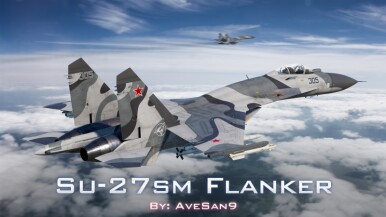
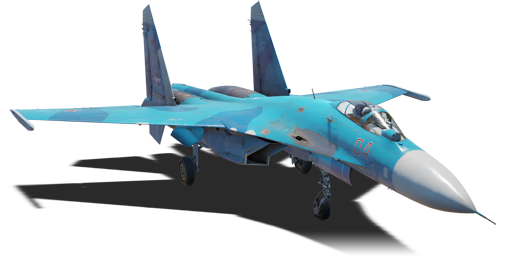



After the dissolution of the USSR, the Russian Federation cancelled many future aircraft projects meant to replace the existing inventory, such as the Su-37 and MiG-1.44. Due to the tight budget of the post-Soviet era, it was instead decided to upgrade existing aircraft with modern avionics and weaponry. The first of such upgrades was the Su-27SM (NATO reporting name: Flanker-B). The Su-27SM upgrade focused primarily on avionics, fire control, and flight control systems, with the primary upgrades being a new cockpit overhaul featuring HOTAS controls, multiple new multi-function displays replacing the old analog instruments, an entirely new navigation system using GLONASS (the Russian equivalent to GPS), a new fire-control system with an improved radar and electro-optical sighting system (IRST) allowing compatibility with new missiles such as the R-77 and slaving of weaponry such as the Kh-29 to the air-to-ground modes in the radar, and a far more advanced mission computer. Finally, the defensive suite was also overhauled, with the SPO-15 Beryoza being replaced by the modern Pastel radar warning receiver, and the famous Sorbtsiya wingtip jamming pods were also replaced by the more modern Khibiny system. The first Su-27SMs began trials in the late '90s and started entering service shortly after the turn of the century. The Su-27SM standard would receive various upgrades throughout its life, culminating in the modern day Su-27SM3 variant.
Introduced in Update "Seek & Destroy", the Su-27SM will be very familiar and is in most aspects similar to the previous Su-27 in the tech tree. The primary differences are its armament, as the Su-27SM has access to the new R-77 Active Radar Homing missile to increase its lethality in air combat. More importantly, the Su-27SM offers guided ordnance options over its predecessor, in the forms of the KAB-500 TV guided bombs, the Kh-29TD medium range TV guided missiles, and the unique KAB-1500Kr, one of the largest TV guided weapons in-game. The Su-27SM unfortunately does not fix the main shortcomings of its predecessor against its contemporaries, such as the insufficiently low amount of countermeasures, the sub-par radar system, or the unstable flight dynamics. All in all, the Su-27SM serves as a step up from its predecessor, and in the right hands, can prove to be a dangerous aircraft in both air-to-air and air-to-ground engagements.
flaps
flaps
flaps
brake
| Belt | Belt filling | Armor penetration (mm) at a distance: | |||||
|---|---|---|---|---|---|---|---|
| 10 m | 100 m | 500 m | 1000 m | 1500 m | 2000 m | ||
| AP-T/HEF-I | 55 | 53 | 45 | 37 | 31 | 25 | |
| AP-T/HEF-I/APHE/HEF-I | 55 | 53 | 45 | 37 | 31 | 25 | |
| AP-T/APHE | 55 | 53 | 45 | 37 | 31 | 25 | |
| AP-T/HEF-I/HEF-I | 55 | 53 | 45 | 37 | 31 | 25 | |
| APHE/HEF-I/HEF-I | 42 | 40 | 34 | 28 | 23 | 19 | |
| Name | Weight | Slot | ||||||||||
|---|---|---|---|---|---|---|---|---|---|---|---|---|
| 105 kg |  |  |  |  |  |  | ||||||
| 114 kg |  |  | ||||||||||
| 268 kg |  |  |  |  |  |  |  |  | ||||
| 253 kg | 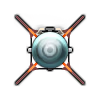 |  |  |  |  |  | ||||||
| 350 kg |  |  |  |  |  |  | ||||||
| 245.5 kg |  |  | ||||||||||
| 343 kg |  |  | ||||||||||
| 177 kg |  |  |  |  |  |  | ||||||
| 20 × | 376 kg |  |  | |||||||||
| 5 × | 505 kg |  |  | |||||||||
| 370 kg |  |  | ||||||||||
| 367 kg |  |  | ||||||||||
| 686 kg | 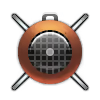 |  |  |  | ||||||||
| 6 × | 684 kg | 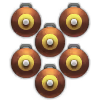 |  |  |  |  |  | |||||
| 6 × | 1,608 kg | 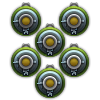 |  | |||||||||
| 227 kg |  |  |  |  |  |  | ||||||
| 275 kg |  |  |  |  |  |  | ||||||
| 508.3 kg |  |  |  |  |  |  | ||||||
| 515 kg |  |  |  |  |  |  | ||||||
| 374 kg |  |  |  |  |  |  | ||||||
| 520 kg |  |  |  |  | ||||||||
| 2 × | 536 kg |  |  |  | ||||||||
| 2 × | 454 kg |  |  | |||||||||
| 2 × | 550 kg |  |  | |||||||||
| 2 × | 1,016.6 kg |  |  | |||||||||
| 2 × | 1,030 kg |  |  | |||||||||
| 2 × | 748 kg |  |  | |||||||||
| 40 × | 752 kg |  |  | |||||||||
| 10 × | 1,010 kg |  |  | |||||||||
| 2 × | 740 kg | 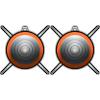 |  | |||||||||
| 2 × | 734 kg |  |  | |||||||||
| 5 × | 1,340 kg | 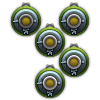 |  | |||||||||
| 2 × | 354 kg |  |  | |||||||||
| 4 × | 1,072 kg | 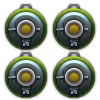 | ||||||||||
| 1,525 kg |  | |||||||||||












Flight performance | |
|---|---|
Survivability |
|---|
Weaponry | |||
|---|---|---|---|
